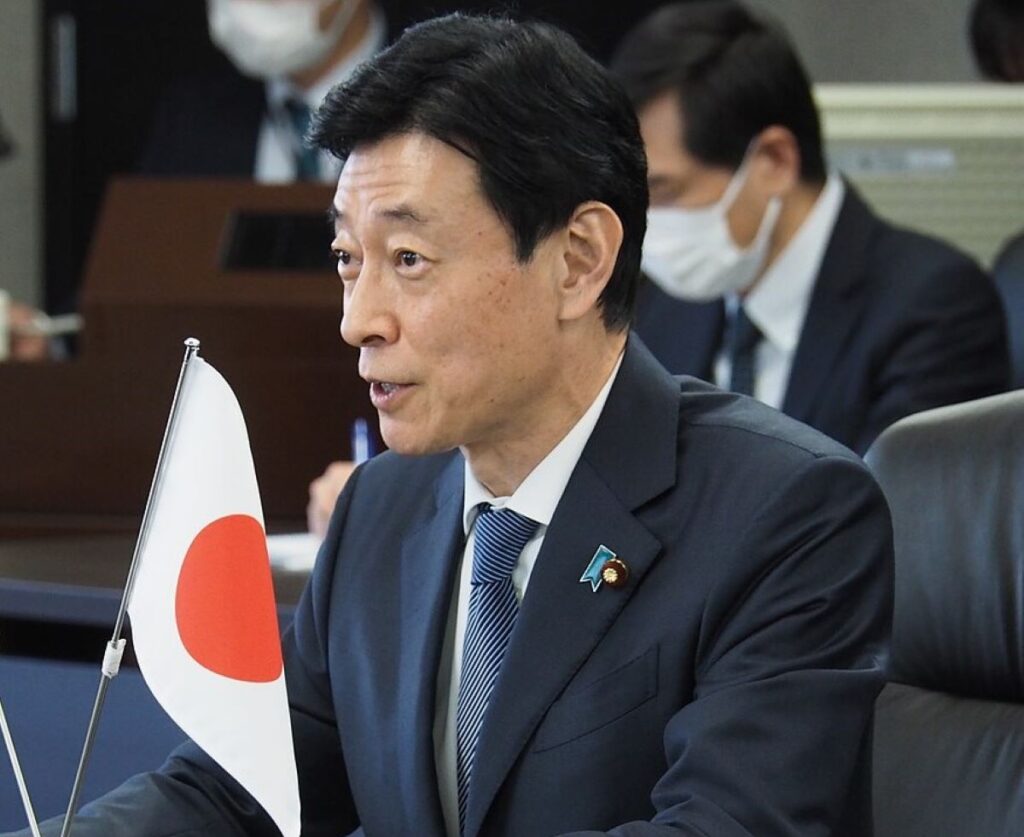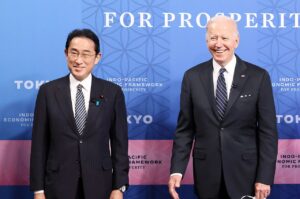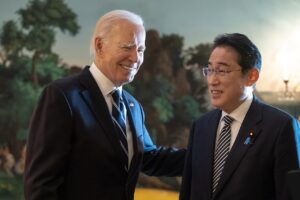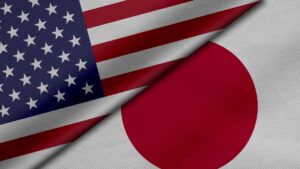What is “Economic Coercion,” and Why Does It Matter?
Over the last decade, the concept of “economic coercion”—the practice of leveraging punitive economic tools as a foreign policy tool—has attracted increased attention. “Economic coercion” is fundamentally a political term and is defined differently in different contexts. For example, the G7 defines “economic coercion” as incidents that “seek to exploit economic vulnerabilities and dependencies and undermine the foreign and domestic policies and positions of G7 members as well as partners around the world.” The EU defines the term as “a situation where a third country attempts to pressure the EU or a Member State into making a particular choice by applying or threatening to apply, measures affecting trade or investment against the EU or a member state.” It could be summarized as “attempts to weaponize economic dependencies” by forcing the target state(s) to comply and conform. Economic coercion also differs from traditional tit-for-tat trade policy measures in that the coercive measures are often extralegal and target a political outcome that may not have a direct relationship to trade policy.
Such attempts are both old and new. They are old in the sense that coercive measures are a well-documented element of economic statecraft, which is generally defined as the use of economic incentives and disincentives in the pursuit of foreign policy goals. At the same time, current trends also show new and concerning elements. First, past eras of rampant economic coercion largely predated the foundation of the World Trade Organization (WTO) and the current rules-based international order. In this sense, “economic coercion” is an attack on the international rule of law and is also part of unilateral attempts to change the status quo that ultimately risk undermining global security and stability. Second, instances of economic coercion are increasing over time, led especially by the People’s Republic of China (PRC). According to reports by Mercator Institute for China Studies (MERICS) and Australian Strategic Policy Institute (ASPI), more than 100 cases are identified as PRC’s coercive measures in the past decade.
Japan was the target of one of the earliest of these cases. On September 7, 2010, a Chinese fishing boat collided with two Japanese Coast Guard vessels in the East China Sea and the Chinese captain of the fishing boat was detained by Japanese authorities. As tensions between China and Japan rose, Chinese customs officials halted shipments of so-called rare earth elements from China to Japan, a clear example of using a non-transparent and coercive economic tool to pursue a political outcome. Other examples include, but are not limited to, the import ban imposed on bananas and pineapples against the Philippines in 2012, import suspensions or delays of wine and others against Australia in 2017 and 2020, and customs blockage against Lithuanian exports in 2021, which also threatened to undermine the EU single market.
A third element of what is new about modern economic coercion is the context in which it is taking place. The international flow of goods, people, and ideas has been a fact of life in human civilization, but the speed at which commerce moves in the modern world and the intricate interdependencies within complex modern supply chains is unprecedented in history. As a result, the ripple effects of economic coercion in this new system are harder to predict than ever before and so the risk of unintended negative consequences is extremely high, particularly for emerging and developing economies.
How Can Countries Respond to Economic Coersion?
When thinking about countermeasures against economic coercion, it is useful to start by analyzing how economic coercion is used at a tactical level. Coercive economic measures are deployed in informal ways and are often vague in terms of their objectives. They are typically targeted against smaller economies and in sectors where asymmetric advantages are perceived in the supply chain. Although some scholars have made convincing arguments that economic coercion rarely leads to specific concessions and generates limited macroeconomic effect, these analyses often overlook a significant problem of silent evidence, namely decisions made by countries or companies not to pursue certain courses of action out of a fear of provoking retaliation, the so-called “chilling effect.” This is one reason why focusing on upholding free trade principles and the rule of law and then responding to coercive measures on an ad-hoc basis may be insufficient as an approach, especially in terms of protecting smaller economies.
How then can we effectively respond to coercive measures? Deterrence theory would suggest two possible approaches: denial versus punishment. Deterrence by denial seeks to achieve deterrence by ensuring the action is unlikely to succeed and thereby persuading the aggressor that the action is not worth pursuing. In the context of economic coercion, policies to promote deterrence by denial may include identifying and reducing asymmetric dependencies in trade with states engaging in economic coercion, deepening economic ties with allies and partners, and creating institutional mechanisms to support targets of economic coercion through subsidizing or increasing purchases of affected goods and services.
In contrast, deterrence by punishment seeks to deter an aggressive action by threatening severe penalties if an attack occurs, thereby raising the cost of action through fear of punishment. Retaliatory measures may include responding to threats or early signs of coercive measures by issuing a joint statement condemning such behavior, imposing new or additional tariffs, introducing travel or tourism restrictions, or imposing outright bans on certain exports. In order to enhance the deterrent potential of such arrangements, it is even possible to envision some form of “economic collective self-defense” similar to the collective self-defense provisions contained in Article 5 of the North Atlantic Treaty.
These efforts to develop deterrence, especially punitive deterrence, are not without risk and could lead to an escalation of tensions and various other unintended consequences. From my perspective, this suggests an emphasis on deterrence by denial should be the first resort for the United States, Japan, and allies, but that building habits of cooperation and communication related to the deployment of punitive measures should also be a priority. The key element for deterrence is to clearly communicate and maintain credibility regarding the imposition of defensive measures as well as threats of punitive retaliations. In doing so, we also need to make continuous efforts to achieve escalation dominance—and thereby deter escalation in the first place—while also leaving paths for retreat and de-escalation. In this context, it is encouraging to see the U.S., Japan, and other countries accelerating their efforts to work together to accomplish these challenging goals, though there remains a lot of work left to do.
Japan’s Response to Economic Coercion: Opportunities and Challenges
In light of its commitment to fostering free and open economy and trade, Japan has taken several measures to counteract economic coercion. As mentioned earlier, Japan received an early wake-up call regarding the dangers of economic coercion in September 2010. One month later, the Japanese government implemented a policy package to enhance the resilience of its rare earth minerals supply chain. The package included efforts to diversify its rare earths supply network, develop and promote technologies to reduce the use of rare earths, stockpile rare earths to ensure reserves of critical minerals, among others. Japanese dependence on Chinese rare earth remains relatively high but is significantly lower that what it was prior to the 2010 incident.
This case, as well as subsequent instances of coercion and the supply chain shocks that occurred during the COVID-19 pandemic, highlighted the significant vulnerabilities inherent in the then-structure of Japan’s economy and international economic relations. In response, Japanese politicians and bureaucrats began to develop and implement policies for “economic security” promotion, aiming to realize an economic structure that would better support the protection of Japan’s national interests, such as peace, security, and economic prosperity.
A key feature of Japan’s strategy as it has developed so far is a whole-of-government approach to economic security with several core principles: strategic autonomy, strategic indispensability, and promotion of a free and open international order. This strategy is anchored in the Economic Security Promotion Act passed in May 2022, which is organized into four pillars, including a framework for ensuring stable supply of key products, a system for ensuring the stable provision of essential infrastructure services, and a framework for enhancing development of advanced critical technologies. The Japanese government has also enacted substantial additional measures to promote strategic industries and is in the process of developing a security clearance program that aims to both better protect critical Japanese technologies and enable deeper and more robust technology cooperation with like-minded countries.
Japan has also emerged as a leader in building international consensus on economic security and against economic coercion among like-minded countries, most notably during its G7 host year in 2023 that produced the first leader’s statement on economic security and economic resilience. This effort was anchored in deep U.S.-Japan cooperation, where economic security has become a major theme running through engagements including the U.S.-Japan Leaders’ Summit in May 2023 and the Economic “2+2” (Economic Policy Consultative Committee, EPCC) in November 2023. The topics of economic security and economic coercion will also certainly be discussed during Prime Minister Kishida’s State visit in April and presents fertile ground for further deepening U.S.-Japan partnership.
Even as both countries are aligned in principle against economic coercion, finding practical success in deterring future coercive efforts will remain a challenging endeavor. First, the upcoming U.S. presidential election is stoking economic nationalist sentiments in the U.S. that are reducing the space for strategic economic cooperation, even with close allies such as Japan, and consequently creating concern in Tokyo regarding continuity of key economic security initiatives. Second, Japan faces certain level of incentives to hedge in its international economic relations, most notably by maintaining strong ties with the PRC, which remains Japan’s largest trading partner. These divisive sentiments are likely to intensify in the run up to November and may even be stoked by actors seeking to undermine cooperation between the U.S., Japan, and their partners.
Finally, building internationally coordinated programs to deter economic coercion through credible and automatic retaliatory measures will require the U.S., Japan, and partners to embrace binding rules and cost-sharing arrangements. All of this suggests that early efforts to promote cooperation are most likely to succeed if they start small in areas where it will be possible to achieve tangible victories that can serve as a stepping-stone to closer collaboration. Relevant actors on both sides of the Pacific and the Atlantic are and will have to continue engaging in robust dialogues and building trust at a challenging political moment. Meanwhile, constructive communication across the aisle is more critical than ever to prevent unwanted escalation and to find grounds for potential collaboration.
Kotaro Shiojiri, Ph.D., is the Japan Foundation Visiting Fellow with the Indo-Pacific Program at the Wilson Center. Dr. Shiojiri is also a Visiting Scholar and Adjunct Lecturer at Johns Hopkins University School of Advanced International Studies (SAIS) and a Visiting Associate Professor at the University of Tokyo Graduate School of Law and Politics. Dr. Shiojiri earned his B.A. in Law, M.A. in International Studies, and Ph.D. in Public Policy from the University of Tokyo, and his LL.M. from Harvard Law School. During his service at the Ministry of Foreign Affairs of Japan (2009-2019), he held various positions, including Chief of Staff to the Ambassador of Japan to the United States and officer in the G8/G20 Summit Office, Economic Policy Division, of the Economic Affairs Bureau. He is the recipient of the University of Tokyo President’s Award and has also served as an intern at the Council on Foreign Relations and Okamoto Associates.




